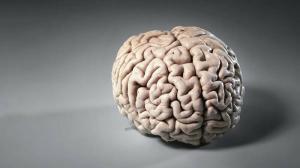Ascending activating reticular system: characteristics and functions
The reticular formation is a brain system that is involved in many functions, all of them essential for our survival and proper functioning.
It is composed of two subsystems, one of them being the ascending activating lattice system, a multi-core circuit which is involved in wakefulness, attention, and sleep-wake changes.
This fascinating set of cores is the one in charge of our attention and, in fact, it is one of the areas that are activated right now as we read this article. Let's find out more about such an interesting system.
- Related article: "Parts of the human brain (and functions)"
What is the ascending activating lattice system?
The ascending reticular activating system or ARAS, known simply as the ascending reticular activating system or ARAS, is one of the two main subunits of the reticular formation.
The reticular formation consists of a series of interconnected nuclei found throughout the brainstem. The RAAS is found together with the other subsystem, which are the descending pathways that go to the spinal cord, via the reticulospinal tracts.
The ascending activating reticular system is a fundamental part of the vertebrate nervous system, since is responsible for the regulation of wakefulness and sleep-wake transitions. This structure is mostly composed of nuclei in the thalamus and a significant number of nuclei brain dopaminergic, noradrenergic, serotonergic, histaminergic, cholinergic and glutamatergic.
Structure and parts
The ascending activating reticular system is made up of several circuits that connect the dorsal part of the posterior midbrain (midbrain) and the anterior part of the brainstem or Varolian bridge. These circuits are directed towards the cerebral cortex by means of different pathways projecting through the thalamus and hypothalamus.
As a whole, the RAAS is composed of more than 20 nuclei on each side of the superior brainstem, the bridge of Varolio, the medulla, and the posterior hypothalamus. These neurons release different transmitters, among which we can find dopamine, norepinephrine, serotonin, histamine, acetylcholine, and glutamate. These neurons exert influence at the cortical level thanks to direct and indirect axonal projections through links at the thalamic level.
The thalamic pathway consists mainly of cholinergic neurons in the pontine tegmentum, while the hypothalamic pathway is composed mainly of monoamine-releasing neurons. These are: dopamine, norepinephrine, serotonin, and histamine.
As we have already discussed, there are also neurons in the ascending activating reticular system that release glutamate. These neurons were identified relatively recently, and have been linked to monoaminergic and cholinergic nuclei. The glutamatergic component of RAAS includes a nucleus in the hypothalamus and several in the brainstem.
Next we are going to go into more detail about which parts are those that make up each of the nuclei specialized in a different type of neurotransmitter.
1. Dopamine nuclei
We have dopamine nuclei in the ventral tegmental area and in the pars compacta of the black substance.
2. Noradrenergic nuclei
Among the noradrenergic nuclei we have the Locus coeruleus and noradrenergic nuclei of the brainstem.
3. Serotonergic nuclei
The serotonergic nuclei are the dorsal and medial raphe nuclei.
4. Histaminergic nucleus
The histaminergic nucleus is the tuberomamillary nucleus.
5. Cholinergic nuclei
Among the cholinergic nuclei we have the cholinergic nuclei of the forebrain and the nuclei of the pontine tegmentum, specifically the laterodorsal and pedunculopontine nuclei.
6. Glutamatergic nuclei
At the level of the brainstem we have the parabrachial nucleus, the precoeruleus and the tegmental pedunculopontine nucleus. Regarding the thalamic level, we have the supramamillary nucleus.
7. Thalamic nuclei
In the thalamus we have the thalamic reticular nucleus and the intralaminar nucleus, which includes the centromedian.
Features
The ascending activating lattice system is a very important network of nuclei, since its functions are of vital importance for the body to remain active and be aware of how it works.
1. Awareness
Consciousness, understood in the sense of be aware of the state of oneself, of its existence, is a human and other animal capacity due to the operation of the SRAA.
2. Regulation of sleep-wake transitions
The ascending activating reticular system is responsible for physiological changes from deep sleep to waking state, transitions that are reversible and necessary for the organism.
The ventrolateral preoptic nucleus of the hypothalamus inhibits the neural circuits responsible for wakefulness. When this same nucleus is activated it causes the dream state to occur.
During the sleep state the neurons of the RAAS have a lower firing rate, while it is higher when awake. In order to enter deep sleep, it is necessary that there be a reduction in the ascending afferent activity that reaches the cortex, something that occurs due to the suppression of the ascending reticular system.
3. Attention
The ascending activating reticular system is also involved in transitions from a relaxed and distracted state of consciousness to periods of high attention.
This occurs due to increased blood flow in the regions where the nuclei of this subsystem are found, blood flow which indicates that there is an increase in neuronal activity, in the reticular formation of the midbrain and the intralaminar nuclei of the thalamus.
Clinical significance
Knowing the functions that we have just seen, it is possible to understand the great importance at a clinical level that presents the ascending activating reticular system, especially when there are massive lesions in the system. Damage to this set of nuclei can cause states of reduced consciousness, such as coma or brain death, in addition to absolute death.
Regarding the pathologies, we can highlight that the SRAA is affected, mainly, by age. As we age, this set of nuclei deteriorates and its neuronal activity becomes more dysfunctional. Among the diseases that affect this system we can highlight the following:
Narcolepsy
Narcolepsy can occur due to lesions in the pedunculopontine and laterodorsal tegmental nuclei. In these nuclei there is a down regulation of the activation of their neurons, in addition to producing a loss of orexin peptides, causing the so characteristic daytime sleepiness of the illness.
- You may be interested: "Narcolepsy: types, causes, symptoms, and treatment"
Parkinson's disease
Parkinson's disease is a medical condition that affects the brain, especially in terms of dopamine production.. However, cholinergic nuclei are also affected. It should be noted that the RAAS is one of the systems that are previously damaged when the disease appears.
Bibliographic references:
- Young, G.B.. (2014). Ascending Reticular Activating System (ARAS). 10.1016 / B978-0-12-385157-4.00311-0.
- Purves, Dale (2011). Neuroscience (5. ed.). Sunderland, Mass.: Sinauer. pp. 390–395. ISBN 978-0-87893-695-3.
- Augustine JR (2016). "Chapter 9: The Reticular Formation". Human Neuroanatomy (2nd ed.). John Wiley & Sons. pp. 141–153. ISBN 9781119073994. Archived
- Mohan Kumar V, Mallick BN, Chhina GS, Singh B (October 1984). "Influence of ascending reticular activating system on preoptic neuronal activity". Exp. Neurol. 86 (1): 40–52. doi: 10.1016 / 0014-4886 (84) 90065-7


